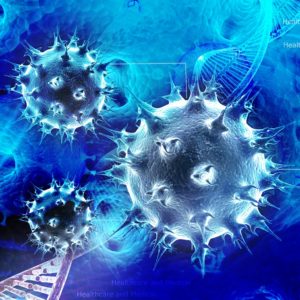
The word “Epidemiology” means “the study of what is amongst the people”, roughly translated from the Greek epi (among or upon), demos (the people) and logos (to study). Although we think of it in terms of human population, there are areas of epidemiology today for zoology, botany and other biosciences where disease affects a population's health or mortality. It can be argued that modern epidemiology has its roots in biology and zoology, where some of the earliest instances of disease study began. Today, it is at the forefront of public health policy, the fight against species threatened by disease, and in driving better quality of life for people of all ages across the world.
What is Epidemiology?
Epidemiology is a branch of medical science concerned with the spread and nature of infection and disease. It examines diseases before it reaches or while it is at epidemic or pandemic stage. Rather than analyzing or studying the structure, evolution and genetics of a disease and the bacteria or virus that causes it - an area of study known as pathology (1) - epidemiology examines how diseases or conditions exist, spread or survive in a given population (2). Epidemiology might look at why a condition is prevalent in one population and not another, and the potential risks of that condition spreading.
Epidemiology is fundamental to understanding how diseases spread (waterborne or airborne). It works alongside pathology and other branches of medical science in understanding why a condition (including contagious diseases, but not exclusively so) is in one geographical area and not another, and what risk factors might lead to it spread. Also, they might seek to understand the cause of why a condition has not spread and appears unlikely to do so. Sometimes, there are geographical or social barriers to disease. Understanding these can be fundamental to preventing the spread of a disease.
When a disease outbreak is identified, an epidemiologist may ask some of the following questions:
- Why are infection rates of this disease higher than normal?
- Why are infection rates of this disease higher than normal in this location?
- What is the potential for the disease to spread?
- What are the wider implications of it spreading?
- What are the likely causes of this outbreak, epidemic or pandemic?
- What treatments are available?
- What can we do now to slow it down? What are known effective short-term and long-term strategies?
Epidemiology studies rates of infectious diseases, and also those with an environmental cause such as toxic spillage, food based diseases such as food poisoning or water contamination, and localized air and water pollution. Today, it is not solely about infectious diseases, but also about biological, social and environmental causes. Some epidemiologists study instances of domestic violence, addiction or mental illness for example (3), to attempt to understand their causes and effects. This means that other social “diseases” such as suicide rates, substance abuse and other non-disease related conditions are also of interest to some types of epidemiologist. These conditions can be epidemic too, although not with the typical biological causes.
Epidemiology is more about statistical analysis of distribution, looking for patterns, and working out causes of a condition. It is more about examining trends than it is about the medical aspects of a condition, although this does play a part.

Areas of Study within Epidemiology
Modern epidemiology is a broad subject. Although people who work outside of medical science might think that they study the spread of infectious diseases only, they also examine rates of non-infectious conditions (4). Professionals may work in roles concerning some or all of the following:
- Etiology: the study of the cause or the origin of an outbreak, epidemic or pandemic. This can be medical or environmental, or have other causes. For example, people who work in this area might attempt to understand and explain why some areas have higher rates of mental illness, cancer or alcoholism
- Study of transmission: How (and if) a medical condition is transmitted from patient to patient or has another cause. Is it contagious or does it have another cause (for example, food poisoning)?
- Outbreak investigation: The general detective work and process of examining everything related to the cause of an outbreak. Epidemiology is a medical science with all the methods and tools that entails (5)
- Disease surveillance: Monitoring outbreaks of disease or conditions, examining such things as seasonal trend, regional instances or other criteria that aids in medical planning, and prevention. They are concerned with collective health rather than individual health
- Forensic epidemiology: This is a sub-discipline that bridges a gap between medical and criminal investigation, and between examination of the individual of a patient and a cause of death (6)
- Biomonitoring: The examination of the “body burden” of a living organism. This area of study typically looks at the digestive tracts and blood system. An epidemiologist who engages in biomonitoring work may look at urine, blood, bile, semen and other body fluids to determine a cause of illness or death (7)
As noted above, epidemiologists are also concerned with conditions that do not relate to medical issues of the physical body. Therefore, professionals in other fields may use the same tools and processes as those who study disease. For example, social workers and professionals concerned with addiction or mental illness may look at why alcoholism is more prevalent in some areas than in others. Some epidemiologists may examine life span, stress rates, why some cities or areas of a city have higher levels of workplace sickness and higher than normal levels of domestic violence (3).
Learn more about how to become an epidemiologist and public health careers.
What is the Difference between Outbreak, Epidemic and Pandemic?
Epidemiologists are concerned with the spread of conditions including but not limited to infectious diseases. The words outbreak, epidemic and pandemic are used interchangeably in the media and in common language. However, they have different meanings in a scientific context (8).
- An outbreak is simply when a disease occurrence in a given population (usually a small area) is higher than what would be considered normal parameters, or a geographical location that is experiencing that condition for the first time. A localized occurrence of food poisoning would be considered an outbreak, usually caused by customers buying the same contaminated food batch from a grocery store or from the same take out
- An epidemic is when a disease affects a far greater number people than is considered normal, or is over a wider area. It's similar to an outbreak but the geographical zone is larger. Additionally, an epidemic is declared when the disease has spread to a geographical area where it is not typically seen. This means it has spread from an area where it is normal to one where it is rare
- A pandemic is like an epidemic, except the disease spread is global. Notable pandemics include the 1918 Influenza Pandemic; this affected over 500 million people and killed more than the First World War, and the AIDS pandemic that has been ongoing since the 1980s. Pandemics need not kill a large number of people in a short space of time, merely that they are spread across the world
Although it doesn't matter so much how the average person uses these terms, in the scientific research community the words are important for understanding the past, present and future threat of a certain condition.
Why is Epidemiology Important? A Case Study
Medical science has grown exponentially in the last century; the birth of modern medicine has given us profound improvements to our general health, lifestyle and longevity. Humans are living longer now on average than ever before. Although public health such as sanitation and clean air, cleanliness of food and awareness of a need to eat a balanced diet have played an important part (including access to food in the western world), the fight against disease has also played a major contributing part to these health improvements. Epidemiology collects information on trends for diseases and other public health issues, collates it, analyzes it and produces reports for future study (2). This scientific investigation and detective work has helped control the spread of harmful health conditions, and in identifying root causes where relevant.
To give one example of the importance of epidemiology today, CDC epidemiologists went to an Army Training Center Fort Leonard Wood, Montana in 2009 to investigate several deaths (9). In this unusual case, two young army trainees who were both seemingly in good health, contracted a form of meningitis (Streptococcus pneumonia meningitis) and died. They belonged to the same company and instances of pneumonia were high in their squad mates.
They looked not only at the circumstances surrounding the deaths of the two individuals, but cases where trainees excused from training due to sickness. They examined a number of other factors too and devised a solution that greatly reduced the risk of meningitis occurring at this camp and other military facilities. They gave advice on cleanliness, procedures for sickness and prescribed antibiotics to those affected.
This study demonstrates that epidemiology underpins public health policy both in terms of preventive planning and in control (10). This was not an only case and recent studies of the spread of Ebola (in Africa in 2014) and Zika (in South America in 2015) have demonstrated further precisely why the study of instances of diseases, illness and other conditions is just as important as treatment.
The History of Epidemiology
Ancient to Medieval World
Although epidemiology is a largely modern science, it's actual history goes back centuries to way before the Enlightenment and the scientific method. Even as far back as classical Greece, great thinkers attempted to come up with naturalistic suggestions for the causes of illness rather than supernatural causes. Hippocrates was the first to push this idea in an essay called On Airs, Waters, and Places (11). Before, during and after the Classical Greek period, the general perception was that sin, mischievous spirits, demonic possession, bad air and the will of the gods (or God in the case of early Christian communities later on) all caused disease and sickness.
However, without a rigorous testing method, much of the prevailing theory on the spread of illness and disease was stuck in the past for centuries to come. The prevailing theory behind the rise of The Black Death in 1340s was miasma theory (bad air spread by pollution or rotting food (12)). The idea did take on some of Hippocrates theory in that it suggested there was an environmental cause - and there is for some conditions, although not in the way was generally believed at the time.
Much of medieval Europe still held on to ancient supernatural notions that demonic possession, sin and bad air caused disease. Miasma theory did not die out as a concept until the 19th century (13), surprisingly late considering the great age of science that was already dawning. It remained the major belief behind the spread of disease, but even before the Age of Enlightenment and the birth of modern science, it had its critics and those willing to challenge the orthodoxy.
Renaissance & Reformation to the 19th Century
Around the middle of the 16th century, Girolamo Fracastoro first suggested that tiny living particles too small for people to see may have caused some diseases (17). His hypothesis flew in the face of received wisdom of miasma theory and it would be another 100 years before the invention of the microscope that would prove him right. He was also the first to suggest that populations could prevent the spread of disease through personal hygiene. Despite having little evidence to back up his hypothesis, his ideas were not completely fanciful. He observed and noted several cases where disease instances had greatly reduced or eliminated with the use of fire (burning bodies, using fire barriers).
John Graunt is one of the most prominent early modern epidemiologists, and he never intended it to be that way. A haberdasher by trade, he found a love of statistics and probability from a young age. He published the first study on what today we could call the science of demographics (15) and he used this to calculate probable survival rates of plague patients (probably Bubonic Plague) during the reign of Charles II. He also invented the life table, a system still used in a range of sciences today but particularly in those who study instances of disease. Further, he found strong correlations between decreased mortality and disease, showing that in times of plague, young and healty people were just as likely to die as the old and infirm.
Epidemiology had another boost in the early 19th century when William Farr invented the modern system of medical statistics, building on the work of John Graunt. Although his belief in what are now obsolete approaches to medical science, his work in collecting data on death demographics (16) related to age, social status and other social factors allowed his peers to begin to realize that some diseases have social patterns. He worked with but fundamentally disagreed with fellow early epidemiologist John Snow who theorized that water was a major cause of the London cholera epidemic. This hypothesis would later prove true and following Snow's death, Farr would come to accept the changing face of the modern science.
The Great Stink: The Event That Effectively Created Modern Epidemiology
Perhaps by accident, miasma theory drove the human race towards a more scientific and less supernaturalistic understanding of the causes of disease later in the 19th century. It was understandable in terms of the evidence as it stood, but today we realize that correlation does not mean causation (6) - and bad smells sometimes correlate with disease, especially when poor sanitation is the root cause of the spread of the disease.
One of the biggest and most successful public health works was Victorian London's modernization of its sewerage system brought on by something called “The Big Stink”. A government session at the Houses of Parliament was abandoned due to an awful smell coming from the River Thames and the pipes that fed into it. This was in the middle of the city's (and possibly the world's at the time) largest ever cholera epidemic. As a result, the British government voted to modernize the sanitation, housing and street cleanliness, replacing all the old pipes, increasing the size of the network and reducing the strain, and removing the smell from the city that had blighted it. The cholera epidemic came to an end shortly afterwards.
Although it was a massive improvement to public health, the perception of the cause remained in error. People still believed that bad smells caused sickness, rather than that excess dirt and poor sanitation caused sickness that would also create the bad smells and the environment for disease to breed and spread (14). Despite this error in thinking, there were proponents of the idea of a waterborne cause of the cholera epidemic and the rise of the science of bacteriology in the later 19th century would shape the 20th century (17). Louis Pasteur's work in developing vaccine theory and pasteurization for food represented a giant leap forward. Together with the work of Edward Jenner who developed the world's first vaccine (for smallpox), and effectively create the medical science of immunology, epidemiology would see great strides but also face new challenges in the 20th century.
Epidemiology in the Modern Era
The 20th century saw several immense shifts in thinking and science within the discipline of epidemiology, largely thanks to the work of forbearers in late 19th century. Bacteriology was now a firmly established medical scientific concept, and so was immunology. The role of bacteria in the causes of some diseases was only gaining more and more evidence and the growing disciple of virology was equally gaining ground. The 20th century was notable for two world wars but also for medical science and pandemic. Spanish Flu was the biggest disease of the century, killing more people in 1918-19 than the war that had just ended. 500 million people were affected and no continent was untouched. In total, anything between 50 million and 100 million people died from the disease - around 3%-5% of the global population in 1919 (18).
The science was already making great strides in the early 20th century. Janet Lane-Claypon examined breast cancer survivors, comparing them to women of a similar demographic who did not have breast cancer and had never developed it. In this, she designed the first case control study (19). Around the same time, her contemporary Sir Ronald Ross received the Nobel Prize for Physiology when he discovered that mosquitoes transmitted the parasite that led to malaria. His discovery, in turn, led to the first treatments of the condition (20).
Diseases that were common in the western world in the 20th century are now rare or extinct. A major diphtheria epidemic in the USA circa 1921-1925 saw the first tests and licensing of vaccination against the disease (21). In the 21st century, this condition is rare. The same can be said for polio, which peaked between 1915 and 1955 globally. It is no coincidence that the first vaccines against this disease in 1955 saw a massive drop of infection in the western world. The same year, Congress enacted the Polio Vaccination Assistance Act (22).
Vaccination led to the greatest success story of the 20th century: the extinction of smallpox. American epidemiologist Donald Henderson was head of the CDC between 1960 and 1965. In this time, he devised the USAID program that would make funds available to fight smallpox and eventually eradicate the disease (23). Between 1967 and 1977, he was at the forefront of spearheading the global eradication campaign. His team recorded one of the greatest medical science achievements in history. However, where the old diseases that blighted global populations fell into decline (some terminally) in the early to mid-20th century, the latter half of the decade was to provide some new challenges for epidemiology.
Medical professionals finally discovered the long-suspected link between lung cancer and smoking in the 1950s. Throughout the course of the 19th century, the disease had gone from rare to pandemic proportions (25). Mechanization, the industrial revolution and the take up of cigarette smoking increased instances of the disease right across the western world. Today, smoking (either first hand or second hand - also known as “passive smoking”) accounts for 90% of all cases of lung cancer (26). Epidemiologists were fundamental to determining the link, analyzing not only tobacco, but also the other contributing substances contained in the treatment of tobacco for cigarettes and cigars and their effects on the human body.
Epidemiologists also found further challenges in the HIV/AIDS epidemic. This is still an ongoing pandemic and differs from most diseases previously studied because the HIV virus lies dormant for many years; there is no guarantee that an infected person will die from HIV related complications or AIDS. To date, some 70 million people have been infected with HIV and 35 million have died from the condition (27). With AIDS, the challenge for modern epidemiology was identifying high-risk groups. Like syphilis, sexual behavior is the major contributing factor to increased HIV risk. Controlling the spread of HIV was as much about changing behaviors as it was about developing treatments. The first inhibitors for this condition became available from the mid-1990s (28); it was arguably the biggest medical challenge of the latter half of the 20th century.
The latter part of the 20th century is when epidemiologists began to understand and work with genetics and geneticists. Some patients have genetic and molecular markers in their blood that put them at higher risk of conditions. Environment was also identified as a possible contributing factor outside the realms of traditional epidemiology, but undoubtedly part of it in calculating disease risk. That's when molecular epidemiology arose as a sub-discipline, to incorporate environmental factors and genetics (29).
Epidemiology does not just cover transmissible diseases but also social conditions where they may be a genetic or environmental factor. Workplace related illnesses are now within the remit of epidemiology - these are not contagious, but will have a common cause for an outbreak. Food poisoning also comes under the special interest of epidemiology too.
But it is to non-transmissible illnesses that that may a surprise interest area for modern epidemiology, especially in view of the concepts and ideas behind molecular epidemiology. Today, it is widely recognized that mental illness can have both social and genetic causes (30). Some genes dictate that a person with that gene is at a higher risk of mental illness, although poverty is also a major contributing factor of instances of substance abuse, alcoholism and domestic abuse too.
Consider an online MPH.
What are the Present and Future Challenges for Epidemiology?
Modern epidemiology is just over a century old. Each generation presents new threats and as some diseases of the 20th century (particularly childhood diseases) become less prevalent, epidemiological researchers and practitioners face increasing challenges from elsewhere.
Bioterrorism
Since 9/11, there has been a genuine concern of the threats of bioterrorism (31). This is defined as the intentional release of toxic agents, bacteria or viruses. It can be deliberate release into an atmosphere, contamination of foodstuffs and water supplies. It is nothing new - chemical warfare has been a reality since trench warfare of World War I. There is now a threat of engineered viruses making their way into the general population. Epidemiologists may have to contend with viruses modified as a way of attacking a population. In recent US history, there have been several bioterrorism attacks already:
- In 1984, the group Bhagwan Shree Rajneesh released salmonella into a local population to attempt to influence the outcome of an election (32)
- 2001 anthrax attacks in the US and Chile where letters laced with the substance were sent to Senators and several members of the media. Five people died (33)
Some epidemiologists were concerned that rogue elements of the Russian government would release smallpox following the collapse of the Soviet Union. Part of the wider concern of bioterrorism is the possibility of genetic engineering of existing viruses to make them more contagious, more virulent and more deadly.
Climate Change
Climate change presents challenges for everybody, everywhere. This is no different for those involved in the medical research of disease and disease transmission. We know that some areas of land are going to change dramatically - drought will be as common as flooding, and we are already seeing these effects with increased erratic weather.
For epidemiology, there is a direct threat that areas that have seen diseases eradicated or those areas that have never experienced those diseases. Arid or temperate areas that become wetter may see the arrival or return of disease-carrying mosquitoes. Studies have been carried out for the southern US states and southern Europe (34) into the potential threat of malarial mosquitoes, Lyme disease, dengue fever and encephalitis moving up from the south to climes more suited to their survival.
Salmonella may become more prevalent too. We may see the emergence of new diseases adapting to changing climate patterns, adaptation and new strains of existing diseases. There are challenges to food supply and water security (35) in the most vulnerable places on the planet, and potential threats in the developing world. Farming practices may have to change in line with soil erosion or lack of water. Where food and clean water is scarce, disease can thrive.
Read more about the history of climate change.
Globalization
Globalization is a result of the ease of communication and travel between countries and continents (36). It is easier to visit countries on vacation and easier for citizens of other countries to come to the US than ever before - the same is true of many countries. The drawback of globalization is that is going to be increasingly easier for a transmissible disease to spread across the country and across the world. With greater movement of people, the challenge is one of quantity of infected or potentially infected, and exotic diseases spreading out of their natural habitats. Where movement used to be a natural barrier to the spread of disease, it will not become its greatest ally.
New Diseases or Increased Threats from Existing Diseases
Since the dawn of the new decade, there have been several outbreaks of diseases unknown just a generation or two ago. Ebola is perhaps the most common, identified in the 1970s. Although Zika virus has been around since the 1950s, the 2015-6 outbreak in Brazil was noteworthy in that it infected more people in one country in one season than is typically infected globally in a given year.
In 2015-16, along with Zika and the hemorrhagic fevers (which includes Ebola) the following diseases experienced a resurgence or higher than normal infection rates (38):
- Dengue fever: A tropical disease carried and spread by mosquitoes that can lead to a more deadly condition called Dengue hemorrhagic fever
- Chikungunya: Another tropical disease carried and spread by mosquitoes, mortality rates are as low as 1 per 1000, mostly the very young and very old. There is no vaccine at present
- Middle East Respiratory Syndrome (MERS): Also known as Camel Flu, MERS spreads to humans from camels. It has been identified in bats but how it spreads from bats to camels and then to humans is unclear
Anti-Vaccine Movement
There is a growing anti-vaccine movement. Around the middle of the last decade, researchers released an academic paper that appeared to show a link between vaccine rates and increased rates of autism. Although the academic community was quick to challenge the data and the paper eventually retracted in the journal where it appeared (39), the discrediting of the team behind the paper did not stem the number of parents refusing to vaccinate their children against diseases such as measles, mumps and rubella.
The MMR vaccines came in for particular criticism. The US and other countries in the western world have seen an increase in the number of instances of these diseases since 2008 thanks to parents opting out of allowing their children vaccines (40). Epidemiology and medical science now has a challenge to control and limit instances of these diseases since the 2008 increase. Although vaccine uptake has improved, similar movements or fear of medical science may appear again in the future. Anti-vaccine is nothing new, it has existed in various forms since Edward Jenner first formulated the first vaccine in the 19th century (41).
Big Data
The advent of Big Data (large sets of cloud-based computerized data) is a present challenge to those who research and apply epidemiology in practice. There are fears that the discipline as it presently exists risks falling behind other medical research areas or losing relevance in the drive towards a greater understanding of public health (42). Large-scale population studies, even in line with the greater collection and analysis available to those who work with big data, can be incredibly time-consuming and expensive. However, there is some evidence to suggest that Cloud and Big Data has its advantages to public health (43). Epidemiologists are able to collect publicly available information and factor it in to their studies - from sources as varied as up to the minute news information, social media and self-reported sickness. Big Data is its drawbacks and its advantages, and will be harnessed in some form for future epidemiological studies.
Social Epidemic Factors
Although most of this article has discussed epidemiology in terms of transmissible disease (bacterial and viral) there are social factors that are now part of the broader study. We touched on them earlier, and these are public health issues with social rather than biological causes. Although some may have a genetic or biological basis they are largely a result of social status or other external factors with potential social rather than medical solutions.
Issues such as instances of mental illness and suicide risk (44), domestic violence (45) or abuse, poverty (46) (and the potential risk of illness it causes), areas where a large number of the potential working population is registered as too sick to work. All of these things have further social impacts, economic impacts and affect the livelihoods and quality of life of a given population. They are not epidemic in the traditional sense, but they are all a matter of public health and in that, come under the remit of epidemiology.
Sources
- http://www.news-medical.net/health/What-is-Pathology.aspx
- http://www.bmj.com/about-bmj/resources-readers/publications/epidemiology-uninitiated/1-what-epidemiology
- https://www.cdc.gov/careerpaths/k12teacherroadmap/epidemiology.html
- http://www.who.int/topics/epidemiology/en/
- https://www.elsevier.com/books/forensic-epidemiology/freeman/978-0-12-404584-2
- https://www.researchgate.net/profile/Alvah_Bittner/publication/13578478_Neurobehavioral_effects_from_exposure_to_dental_amalgam_Hg_New_distinctions_between_recent_exposure_and_Hg_body_burden/links/551d93e80cf29dcabb0302eb.pdf
- https://www.cdc.gov/eis/downloads/epidemiology-factsheet.pdf
- https://academic.oup.com/aje/article/174/7/871/116502
- http://classics.mit.edu/Hippocrates/airwatpl.html
- https://www.ncbi.nlm.nih.gov/pmc/articles/PMC1121911/
- http://www.stat.rice.edu/stat/FACULTY/courses/stat431/Graunt.pdf
- https://books.google.co.uk/books?id=AzZZ-uW6WuEC&pg=PA286&redir_esc=y#v=onepage&q&f=false
- hhttps://www.jstor.org/stable/301787?seq=1
- http://journals.lww.com/epidem/Fulltext/2006/11000/Janet_Elizabeth_Lane_Claypon__A_Forgotten.17.aspx
- http://ajph.aphapublications.org/doi/pdf/10.2105/AJPH.16.8.844
- https://www.ncbi.nlm.nih.gov/pmc/articles/PMC1623342/
- http://www.jhsph.edu/about/history/in-memoriam/donald-a-henderson/
- http://www.livescience.com/41478-scariest-disease-outbreaks.html
- http://tobaccocontrol.bmj.com/content/21/2/87.full
- https://www.cdc.gov/cancer/lung/basic_info/risk_factors.htm
- http://www.who.int/gho/hiv/en/
- http://www.medscape.com/viewarticle/820359
- https://scielosp.org/article/bwho/2000.v78n4/413-426/
- https://www.cdc.gov/phlp/docs/forensic_epidemiology/Additional%20Materials/Articles/Torok%20et%20al.pdf
- https://www.cdc.gov/anthrax/bioterrorism/threat.html
- https://www.ncbi.nlm.nih.gov/pmc/articles/PMC4342988/
- http://www.who.int/tdr/publications/documents/seb_topic3.pdf
- http://www.jgid.org/article.asp?issn=0974-777X;year=2016;volume=8;issue=1;spage=3;epage=15;aulast=Sikka
- https://www.cdc.gov/vaccinesafety/concerns/autism.html
- https://www.cdc.gov/measles/cases-outbreaks.html
- http://blogs.plos.org/publichealth/2016/07/16/public-health-takes-on-anti-vaccine-propaganda-damage-done-challenges-ahead/
- https://www.ncbi.nlm.nih.gov/pmc/articles/PMC4681267/
- https://www.ncbi.nlm.nih.gov/pmc/articles/PMC4321985/
- https://www.nimh.nih.gov/health/statistics/index.shtml
- http://www.pitt.edu/~epi2670/domestic/domesticvio2009.pdf
- http://journals.lww.com/epidem/fulltext/2007/11000/why_epidemiologists_cannot_afford_to_ignore.2.aspx
- Guide to Parasitology - November 19, 2018
- Deserts as Ecosystems and Why They Need Protecting - November 19, 2018
- Conservation: History and Future - September 14, 2018






